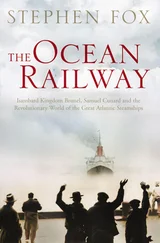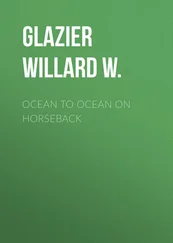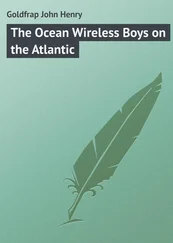Infant; School-boy; Lover; Soldier; Justice; Slipper’d Pantaloon; and Second Childishness. It seemed, all of a sudden, just about the ideal. Pinioned within these seven categories, the stages of our relationship with the ocean could be made quite manageable.
I could examine in the First Age, for example, the stirrings of humankind’s initial childlike interest in the sea. In the Second, I could examine how that initial curiosity evolved into the scholarly disciplines, of exploration, education, and learning - and in this as in all the other Ages I could explore the history of that learning, so that each Age would become a chronology in and of itself. I could then become captivated in the Third Age — that of the lover- by the story of humankind’s love affairs, by way of the art, poetry, architecture, or prose that this sea has inspired over the centuries.
In the Fourth Age - that of the soldier -1 could tell of the arguments and conflicts that have so often roiled the ocean, of how the force of arms over the years has compelled migration or fostered seaborne crime, of how national navies have reacted, how individual battles have been fought, and how Atlantic heroes have been born.
In the Fifth Age - that of the well-fed Justice -I could describe how the sea eventually became a sea of laws and commerce, and how tramp steamers and liners and submarine cables and jet aircraft then crossed and recrossed it in an infinite patchwork designed for the attainment of profit and comfort. In the Sixth Age, that dominated by the fatigue and tedium of the pantaloon, I could reflect upon the ways that man has recently wearied of the great sea, has come to take it for granted, to become careless of its special needs and to deal with it improvidently. And in the Seventh and final Age — the Age that ends with Shakespeare’s immemorial sans teeth, sans eyes, sans taste, sans everything — I could imagine the ways by which this much-overlooked and perhaps vengeful ocean might one day strike back, reverting to type, reverting to the primal nature of what it always was.
Alluring as this all might seem, however, there was something else. First I had to make the frame, to construct the proscenium arch, to attempt to place the long human drama within the very much longer physical context. Only when that had been achieved, and by leave of the enormous natural forces that had made the ocean in the first place, could I try to begin to unveil and recount the human stories. Only then could I attempt to tell something of the ocean’s hundreds of millions of years of life, and of the scores of thousands of its middle years during which the men and women who made up its community would eventually go out onstage, and by their own lights, each perform their unique, and uniquely Atlantic, roles.
First — just how was the ocean made? How did it all begin?
PROLOGUE: THE BEGINNINGS OF ITS GOINGS ON CONTENTS Cover Title Page ATLANTIC A VAST OCEAN OF A MILLION STORIES Simon Winchester Copyright Dedication THIS BOOK IS FOR Setsuko AND IN MEMORY OF Angus Campbell Macintyre FIRST MATE OF THE SOUTH AFRICAN HARBOUR BOARD TUG THE SIR CHARLES ELLIOTT WHO DIED IN 1942, TRYING TO SAVE LIVES AND WHOSE BODY LIES UNFOUND SOMEWHERE IN THE ATLANTIC OCEAN PREFACE THE LEAVING OF LIVERPOOL PROLOGUE THE BEGINNINGS OF ITS GOINGS ON Chapter One FROM THE PURPLE ISLES OF MOGADOR Chapter Two ALL THE SHOALS AND DEEPS WITHIN Chapter Three OH! THE BEAUTY AND THE MIGHT OF IT Chapter Four HERE THE SEA OF PITY LIES Chapter Five THEY THAT OCCUPY THEIR BUSINESS ON GREAT WATERS Chapter Six CHANGE AND DECAY ALL AROUND THE SEA Chapter Seven THE STORM SURGE CARRIES ALL BEFORE … EPILOGUE FALLS THE SHADOW. FADES THE SEA. ACKNOWLEDGMENTS BIBLIOGRAPHY GLOSSARY INDEX Keep Reading Also By Simon Winchester About the Publisher
All the world’s a stage And all the men and women merely players: They have their exits and their entrances; And one man in his time plays many parts, His acts being seven ages.
A big ocean - and the Atlantic is a very big ocean indeed - has the appearance of a settled permanence. Stand anywhere beside it, and stare across its swells towards the distant horizon, and you are swiftly lulled into the belief that it has been there forever. All who like the sea - and surely there can be precious few who do not - have a favoured place in which to stand and stare: for me it has long been the Faroe Islands, up in the far north Atlantic, where all is cold and wet and bleak. In its own challenging way, it is entirely beautiful.
Eighteen islands, each one a sliver of black basalt frosted with gale-blown salt grass and tilted up alarmingly from east to west, make up this Atlantic outpost of the Kingdom of Denmark. Fifty-odd thousand Faroese fishermen and sheep farmers cling there in ancient and determined remoteness, like the Vikings from whom they descend and whose vestiges of language they still speak. Rain, wind and fog mark out these islanders’ days — although from time to time, and on almost every afternoon in high summer, the mists suddenly swirl away and are replaced by a sky of a clarity and blue brilliance that seems only to be known in the world’s high latitudes.
It was on just a day like this that I chose to sail, across a lumpy and capricious sea, to the westernmost member of the archipelago, the island of Mykines. It is an island much favoured by artists, who come for its wild solitude and its total subordination to the nature that so entirely surrounds it. And going there left a deep impression: in all my wanderings around the Atlantic, I can think of no place that ever gave me so great an impression of perching on the world’s edge, no better place to absorb and begin to comprehend the awful majesty of this enormous ocean.
The landing on Mykines was exceptionally tricky. The boat surfed in on the green breaking top of an ocean roller into the tiny harbour, its skipper tying up for just enough time to let me clamber out onto a cement quay lethal with slippery eelgrass. A staircase of rough stones rose up to the skyline, and I scrambled upwards, only too well aware of the deep chasm filled with boiling surf far below beside me. But I made it. Up on top there was a scattering of houses, a church, a shop and a tiny inn, its sitting room heavy with the smell of pipe smoke and warm wet sweater wool. A sudden furious blast of wind had driven away the morning fog, and the sun revealed a long steep slope of grass that stretched right up the island tilt, clear up to the western sky.
There was a grassy pathway leading up to this high horizon, and a skein of islanders was moving slowly up it, like a line of ants. I joined them, out of curiosity. To my great surprise most were dressed in Faroese finery - the men in dark blue and scarlet jackets, with high necks and rows of silver buttons, knee breeches and silver-buckled shoes; the women in wide-striped long skirts, blue vests fastened with an elaborate cat’s cradle of chains, and fringed scarves. And though a few men had anoraks with folded felt snoods, none wore hats: the incessant wind would have whipped them away. The children, dressed just as their parents, whooped and skirled and slid on the wet grass, their elders tutting them to keep their boots clean and to be careful not to fall.
It took thirty minutes to do the climb, and none of the islanders seemed to break a sweat. They all gathered at a site by the cliff top, where the grass was flattened. There was a memorial stone here, a basalt cross incised with the names, I was told, of the fishermen who had died in the Icelandic fishing grounds off to the west. The crowd, perhaps a hundred in all, arranged themselves beside the summit marker, a cairn of basalt boulders, waiting.
After a few minutes a white-haired man of sixty or so, puffing a little from exercise, appeared at the top of the path. He was dressed in a long black surplice with a ruffled high collar that made him look as if he had stepped from the pages of a medieval chapbook. He was a Lutheran pastor, from the Faroese capital town of Thorshavn. He proceeded to lead a service, helped by two churchwardens who played accordions and one island lad with a guitar. A pair of pretty young blond children handed around some damp hymn sheets, and the villagers’ high voices set to singing old Norse holy songs, the thin music instantly swept away to sea by the gale, as it was designed to be.
Читать дальше












